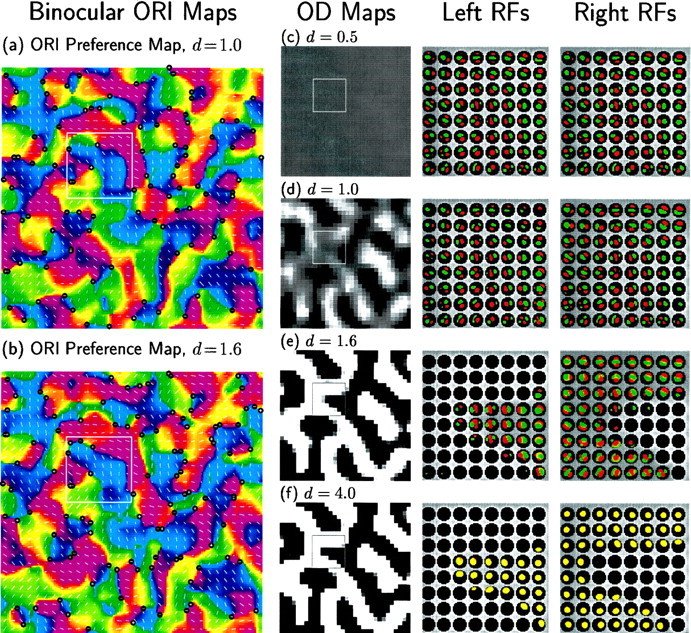Fig. 7.

Combined development of OD segregation and ocularly matched ORI maps. Only COD and CORI+ are non-zero; CORI− = CSUM = 0. As in Figure 6a, CORI+ is a Mexican-hat function, CORI+ = M (Fig. 1c), which leads to development of ORI-selective simple cells with matched orientations and phases in the two eyes. As in Figure 5, COD is a Gaussian function, which leads to OD segregation: COD(α⃗, β⃗) = dG3(‖α⃗ − β⃗‖) (Fig. 1b). The magnitude d of COD is varied in a and b and c–f. For these functions, λ0OD/λ0ORI+ = 0.97 d ≈ d. When d is small, ORI dominates and OD segregation does not develop; when d is large, OD dominates and ON/OFF segregation and ORI do not develop. a, b, Binocular ORI preference maps (see Materials and Methods) for d = 1.0 and d = 1.6; note that preferred ORIs match in the two eyes for binocular cells. c–f, OD maps and sample RFs for d = 0.5, 1.0, 1.6, and 4.0. When an ORI map develops, its structure is largely unchanged by co-development of an OD map (compare Fig. 6a, which has d = 0, with a and b here). Similarly, to the extent to which an OD map develops, its structure is unchanged by co-development of an ORI map (compare Fig. 5a with d and e here). The sample RFs come from the 8 × 8 cells indicated byboxes in the maps.
